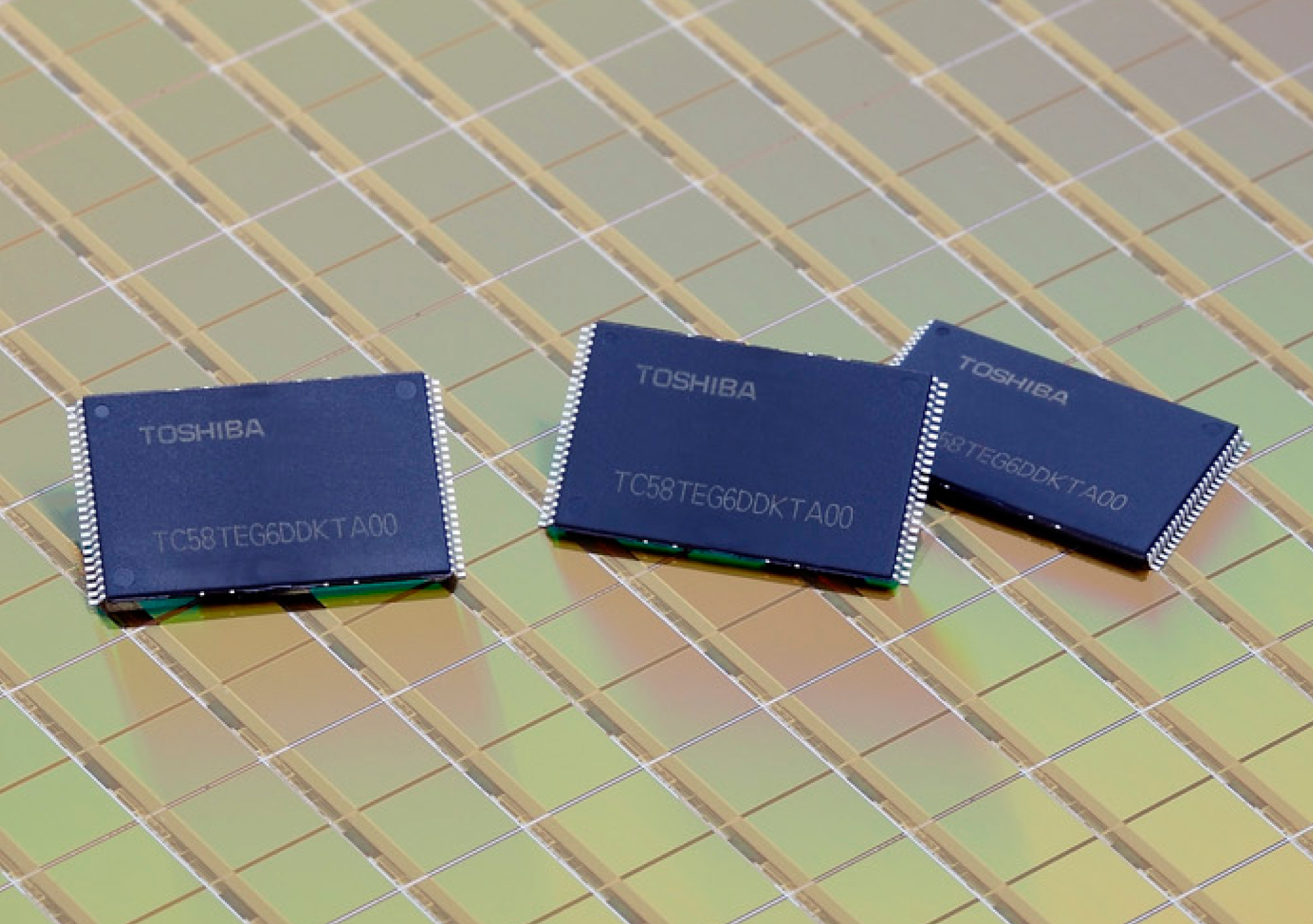Toshiba Mass Producing World's Smallest 64 Gb NAND Chips
Toshiba is producing 64 Gb NAND chips using its second-generation 19 nm processing tech.
Toshiba said that it has developed second generation 19 nm process technology that will be used in the mass production of 2-bit-per-cell 64 gigabit NAND memory chips later this month.
According to the company, this second generation tech was actually used to develop the new 64 Gb chips. The NAND will have an area of only 94 square millimeters, and achieve a write speed of up to 25 megabytes a second, the world's fastest class in 2-bit-per-cell chips, Toshiba claims.
"NAND flash memory is an essential component of a diverse line-up of consumer products, including memory cards, smartphones, tablets and notebook PCs, and is increasingly deployed in enterprise products, including SSD for data centers," the company said. "Looking to the future, Toshiba will continue to promote product innovation and development as a leading company in the market, able to respond to a wide variety of clients' needs."
Also on the development table are 3-bit-per-cell chips using the same process technology that are expected to go into mass production in the second quarter of fiscal 2013. The company will initially introduce these multi-level-cell (MLC) products for smartphones and tablets via an eMMC-compatible controller.
Toshiba said it will eventually extend the memory's application to notebook PCs by developing a separate controller compliant with solid state drives (SSD).
Get Tom's Hardware's best news and in-depth reviews, straight to your inbox.

Kevin Parrish has over a decade of experience as a writer, editor, and product tester. His work focused on computer hardware, networking equipment, smartphones, tablets, gaming consoles, and other internet-connected devices. His work has appeared in Tom's Hardware, Tom's Guide, Maximum PC, Digital Trends, Android Authority, How-To Geek, Lifewire, and others.
-
Someone Somewhere 25MB/s? IIRC most high-end SSDs have 8 channels and use 2bpc MLC, so if they were 25MB/s per channel, wouldn't that mean no SSD could be faster than 200MB/s?Reply -
xiinc37 Reply10905284 said:25MB/s? IIRC most high-end SSDs have 8 channels and use 2bpc MLC, so if they were 25MB/s per channel, wouldn't that mean no SSD could be faster than 200MB/s?
Maybe they'll use 16 channels? -
razor512 How many writes can it handle before the chip dies?Reply
unlike in the past, with designs getting smaller and smaller, these companies seem far less forthcoming about the write endurance.
